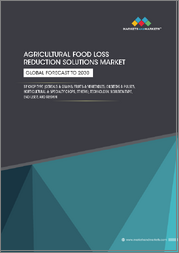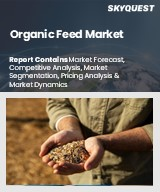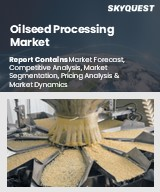
|
시장보고서
상품코드
1635152
파종용 지방 종자 시장 평가 : 작물 유형, 형질, 종자 유형, 지역별 기회 및 예측(2018-2032년)Oilseed for Sowing Market Assessment, By Crop Type, By Trait, By Seed Type, By Region, Opportunities and Forecast, 2018-2032F |
||||||
세계의 파종용 지방 종자 시장 규모는 2024년 3,019억 4,000만 달러에서 예측 기간 중 4.97%의 CAGR로 추이하며, 2032년에는 4,450억 8,000만 달러 규모로 성장할 것으로 예측됩니다.
식품, 사료, 바이오연료를 포함한 많은 산업분야에서 종자 수요를 반영하여 시장이 호황을 누리고 있습니다. 대두, 해바라기, 카놀라유, 면실유는 식용유 생산, 사료, 바이오연료의 중요한 원료입니다. 인구의 급증, 도시화, 건강한 식습관으로 변화하는 라이프스타일은 식용유에 대한 수요를 더욱 증가시키고 있습니다. 또한 축산 부문도 지속적으로 확대되고 있으며, 고품질 사료에 대한 수요가 증가하고 있습니다. 또한 재생 에너지에 대한 관심이 높아지면서 바이오디젤 생산에 종자를 적용하는 사례가 늘고 있습니다.
유전자 변형과 하이브리드 종자 개발을 통한 종자 육종 기술의 발전으로 종자 수확량, 해충 저항성, 다양한 기후 조건에 대한 적응성이 향상되고 있습니다. 이는 지속가능한 농업 관행과 생산성 향상을 위한 정부 구상에 의해 지원되고 있습니다. 하지만 이러한 발전에도 불구하고 농산물 가격 변동, 환경 문제, 세계 일부 지역의 유전자 변형 작물에 대한 규제 제약 등의 문제에 직면해 있습니다.
지역적 관점에서 볼 때, 선진 지역에서는 첨단 농업 기술이 받아들여지고 있습니다. 동시에 신흥 국가들도 시시각각 변화하는 국내 및 수출 수요에 대응하기 위해 재배면적과 생산성 향상에 집중하고 있습니다.
세계의 파종용 지방 종자 시장을 조사했으며, 시장의 정의와 개요, 시장 규모 추이·예측, 각종 구분별 상세 분석, 산업 구조, 시장 성장에 대한 영향요인 분석, 사례 연구, 경쟁 구도, 주요 기업의 개요 등을 정리하여 전해드립니다.
목차
제1장 프로젝트 범위와 정의
제2장 조사 방법
제3장 개요
제4장 고객의 소리
- 인구통계
- 시장 인식·제품 정보
- 브랜드 인지도·로열티
- 구입 결정시 고려되는 요소
- 구입 채널
- 구입 빈도
- 기존 또는 예정 사용자
제5장 세계의 파종용 지방 종자 시장 전망
- 시장 규모 분석·예측
- 시장 점유율 분석·예측
- 작물 유형별
- 형질별
- 종자 유형별
- 지역별
- 기업 점유율 분석(상위 5사 및 기타)
- 시장 맵 분석
제6장 북미의 파종용 지방 종자 시장 전망
- 시장 규모 분석·예측
- 시장 점유율 분석·예측
- 작물 유형별
- 형질별
- 종자 유형별
- 국가별 점유율
- 국가별 시장 평가
- 미국
- 캐나다
- 멕시코
제7장 유럽의 파종용 지방 종자 시장 전망
- 독일
- 프랑스
- 이탈리아
- 영국
- 러시아
- 네덜란드
- 스페인
- 터키
- 폴란드
제8장 아시아태평양의 파종용 지방 종자 시장 전망
- 인도
- 중국
- 일본
- 호주
- 베트남
- 한국
- 인도네시아
- 필리핀
제9장 남미의 파종용 지방 종자 시장 전망
- 브라질
- 아르헨티나
제10장 중동 및 아프리카의 파종용 지방 종자 시장 전망
- 사우디아라비아
- UAE
- 남아프리카공화국
제11장 규제 상황
제12장 수급 분석
제13장 수출입 분석
제14장 밸류체인 분석
제15장 Porter's Five Forces 분석
제16장 PESTLE 분석
제17장 거시경제 지표
제18장 가격 분석
제19장 이익률 분석
제20장 시장 역학
- 시장 성장 촉진요인
- 시장이 해결해야 할 과제
제21장 시장 동향과 발전
제22장 사례 연구
제23장 경쟁 구도
- 상위 5사의 경쟁 매트릭스
- 기업 에코시스템 분석(스타트업 vs 중소기업 vs 대기업)
- 상위 5사의 SWOT 분석
- 상위 10사의 상황
- Bayer AG
- Corteva Agriscience
- Syngenta Group
- BASF SE
- KWS SAAT SE & Co. KGaA
- DLF Seeds A/S
- EURALIS SEMENCES
- Groupe Limagrain Holding
- RAGT SEMENCES S.A.S
- Nufarm Limited
제24장 전략적 제안
제25장 Market Xcel - Markets and Data 소개·면책사항
KSA 25.02.12Global oilseed for sowing market is projected to witness a CAGR of 4.97% during the forecast period 2025-2032, growing from USD 301.94 billion in 2024 to USD 445.08 billion in 2032. The market is booming and reflects the need for oilseeds in many industries, including food, feed, and biofuels. Soybean, sunflower, canola, and cottonseed are important raw materials for edible oil production, animal feeds, and biofuels. The rapid increase in population, urbanization, and lifestyle changes toward healthier eating habits have further increased the demand for edible oils. Meanwhile, the livestock sector continues to expand, increasing demand for high-quality feed. Furthermore, the growing attention towards renewable energy sources is increasingly motivating the application of oilseeds in biodiesel production.
Technological advancement in seed breeding through genetic modification and hybrid seed development is thus improving oilseed yield, pest resistance, and adaptability to different climatic conditions. This has also been supported by government initiatives aimed at sustainable agricultural practices and productivity enhancement. Despite these advancements, evolution is being faced with challenges such as commodity price fluctuation, environmental issues, and regulatory constraints on genetically modified crops in some parts of the world.
From a geographical perspective, advanced agricultural technologies are being embraced by developed regions. At the same time, their emerging counterparts focus on increasing their acreage and productivity to meet ever-changing domestic and export demands. The competitive landscape of this industry is reflected in extensive R&D efforts, collaborations, and strategic expansion of key players to enter the high-growth markets. The global oilseed for sowing market is thus perceived to be evolving around food security and energy requirements and mitigating environmental and regulatory constraints.
In July 2023, two novel canola hybrid cultivars, Hyola Defender CT and Hayola Continuum CL, were brought to the Australian market by Pacific Seeds, a division of Advanta Seeds. These cultivars provide improved weed control versatility, high oil content, robust disease resistance, and good production performance.
Rising Demand for Edible Oils Catalyzes Market Expansion
The growing demand for edible oils drives the global market for oilseed for sowing. While the population continues to grow and urbanize, the trend of preferences in food into healthier and other varieties, such as plant-based oils, increases. Oilseeds have oils from plants like soybean, sunflower, canola, and other varieties of oilseeds. Enriched with fatty acid and vitamin content, these oils are generally used in cooking as well as for food preparation. Additionally, the growing lifestyle diseases, like obesity and cardiovascular diseases, further build interest among consumers in oils that have lower saturated fat, such as canola and sunflower oils.
This trend is very prevalent in emerging economies where the levels of income and standard of living are rising abruptly; pushing greater levels of consumption towards packaged and processed foods, which, in many cases, include oilseed-based oils. In the developed markets, increased preference for organic and non-genetically modified (non-GMO) oils further drives the demand. The push for edible oils has increased the cultivation of oilseeds, thus putting farmers and agricultural companies in a position to invest in high-yield varieties of seeds and modern farming techniques to meet the world's growing demands.
In July 2023, with the addition of 11 high-yielding varieties for the 2024 growing season, Xitavo soybean seed, by BASF SE, significantly broadened its portfolio. Due to these impactful agronomic advances, the updated Xitavo seed collection comprises 44 types with relative maturities ranging from 0.0 to 4.8. Enlist E3 technology is incorporated into all new types to tackle challenging weeds.
Expansion of Biofuel Production Influences Market Growth
The global oilseed for sowing market for biofuel production has a phenomenal prospect. Depletion of fossil fuel reserves coupled with the need for more sources of renewable energy on pressing environmental grounds is prompting an escalating trend of demand for biofuels. Oilseeds such as soybean, canola, and sunflower serve as key raw materials for biodiesel production due to their high oil content and favored chemical properties. Amid the thrust of policy and incentives, many governments have introduced these set-up policies and incentives that further support the blending mandates and subsidies for biodiesel to create biomass, boosting oilseed cultivation.
In September 2024, as part of a new biofuel experiment, Rio Tinto PLC established Pongamia seed farms in Australia. Pongamia seed oil's potential as a feedstock for renewable diesel-a greener substitute for conventional fossil fuels-will be investigated by the research. Rio Tinto is aggressively investigating the possibility of biofuels in the low-carbon energy mix as part of its continuous efforts to reach net-zero Scope 1 and 2 carbon emissions by 2050.
Aggressive renewable energy targets have been put in place by regions like North America and Europe, creating a demand that is promising for biodiesel derived from oilseeds. Even in developing countries, investment in biofuel infrastructure has been driven by the double dividends of energy security and rural economic development, increasing the demand for oilseed crops. Additionally, biodiesel processing technology has been upgraded to produce high oilseed utilization efficiency, making biofuels more affordable and sustainable. Such increasing attention to biofuels has shaped oilseed sowing patterns. It continues to evolve towards the development of disease-resistant and high-yield seed varieties that will fulfill energy and environmental goals.
Hybrid Seeds Hold a Significant Market Share
The hybrid seeds control the global oilseed sowing market since they exhibit superior traits such as increased yields, resistance to diseases and pests, and adaptability to various climatic conditions. Developments with advanced breeding techniques to produce hybrid seeds employ the best traits from the parent plants to guarantee higher productivity and quality. Current conditions require these seeds especially to solve problems related to limited arable land and demand for sustainable agricultural practices.
In July 2023, Corteva Agriscience's seed brand Pioneer expanded its line of products to include two unique oilseed rape hybrids for winter, PT312 and PT315, added to the EU List and the UK National List. The Protector Sclerotinia trait, initially observed in PT303 in 2021, is now present in PT312, producing a remarkable oil content of 47.6% and a very high gross output yield of 103% in 2022, UK National List trials. Pioneer's second variety introduced in the UK and Ireland is PT315, which produced an oil content of 46.8% and an even higher yield (106%) than PT312, according to UK National List trials.
The trend available nowadays has led farmers of all forms to better adapt the kind of oilseed hybrids to provide better and constant returns on investment. Though very expensive at the beginning, the long-term advantage factor of hybrid seeds makes them essential for agricultural development.
North America Dominates the Market
North America hosts the major share of the oilseeds for sowing market globally because of its sophisticated agricultural infrastructure, extensive adoption of GM seeds, and strong demand for oilseed-based products. The region also benefits from favorable climatic conditions, large-scale mechanized farming, and significant investment in agricultural research and development. Some of the key oilseed crops, such as soybean, canola, and sunflower, are largely cultivated in countries like the United States and Canada to meet the highest demand for edible oils, biodiesel, and animal feeds.
In June 2023, "Silverline", a new conventional soybean brand, was introduced by Syngenta Seeds to the Canadian market. Previously branded as NK soybeans, the high-protein soybeans were manufactured and supplied to retailers and growers by Jackson Seed Service and Hensall Co-op.
Countries throughout North America have been using GM seeds for several purposes, from herbicide tolerance to pest resistance, and have improved significantly in productivity. These continue to push the market in North America further in consideration of government policies favoring biofuels, including supporting the exportation of oilseed products. High supply chains, combined with advancing seed breeding programs, allow farmers to access quality seeds year-round. Consequently, the entire region is established as a potential leader in oilseed for the sowing market, posing as a strong competitor in the global market.
Future Market Scenario (2025 - 2032F)
The adoption of GM and hybrid variants of oilseeds is much ready to see application-enhanced traits including pest-resistant and drought-resistant traits. Enhancement innovation will further increase productivity levels and address issues such as climate change and reduced arable land.
The seed companies are expected to concentrate on their products in the near future primarily on environmentally friendly or naturally bred seeds, majorly focusing on niche markets and innovative product development initiatives.
The emerging economies in Asia-Pacific would ensure future growth through increased oilseed production with the support of government incentives and export-related opportunities. Improved farming practices and infrastructure in the region will further enhance the contribution to the global market.
Key Players Landscape and Outlook
Most of the leading players in the global oilseed for sowing market are focused on innovation, sustainability, and meeting the increasing demand from various sectors such as food, feed, and biofuels. These companies have invested substantially in research and development for high-yielding, disease-resistant, and climate-adaptive varieties. The adoption of GM and hybrid seeds is becoming increasingly popular because they provide better productivity, pest resistance, and better performance over diverse environmental conditions.
Additionally, the leading players in the market are diversifying their portfolios, keeping the increasing trend of consumption in mind, concerning non-GMO or organic oilseeds, particularly in highly regulated areas. Most mergers and acquisitions are aimed at increasing the presence of the major players in the market, including strategic alliances and collaborations. As demand increases for sustainable agricultural solutions, expectations for these players are bright. The market expansion is expected through continued technological improvement and an increase in oilseed production in emerging economies.
Table of Contents
1. Project Scope and Definitions
2. Research Methodology
3. Executive Summary
4. Voice of Customer
- 4.1. Demographics (Income - Low, Mid and High; Geography; Nationality; etc.)
- 4.2. Market Awareness and Product Information
- 4.3. Brand Awareness and Loyalty
- 4.4. Factors Considered in Purchase Decision
- 4.4.1. Seed Quality
- 4.4.2. Yield Potential
- 4.4.3. Pest and Disease Resistance
- 4.4.4. Price
- 4.4.5. Climate Adaptability
- 4.4.6. Genetic Modification (GM) Traits
- 4.4.7. Brand Reputation
- 4.4.8. Availability and Distribution Network
- 4.4.9. Regulatory Compliance
- 4.4.10. Sustainability and Environmental Impact
- 4.5. Purchase Channel
- 4.6. Frequency of Purchase
- 4.7. Existing or Intended User
5. Global Oilseed for Sowing Market Outlook, 2018-2032F
- 5.1. Market Size Analysis & Forecast
- 5.1.1. By Value
- 5.1.2. By Volume
- 5.2. Market Share Analysis & Forecast
- 5.2.1. By Crop Type
- 5.2.1.1. Soybeans
- 5.2.1.2. Cottonseed
- 5.2.1.3. Sunflower Seed
- 5.2.1.4. Canola
- 5.2.1.5. Rapeseed
- 5.2.1.6. Peanuts
- 5.2.1.7. Others
- 5.2.2. By Trait
- 5.2.2.1. Genetically Modified (GM)
- 5.2.2.2. Conventional
- 5.2.3. By Seed Type
- 5.2.3.1. Open-pollinated Seeds
- 5.2.3.2. Hybrid Seeds
- 5.2.4. By Region
- 5.2.4.1. North America
- 5.2.4.2. Europe
- 5.2.4.3. Asia-Pacific
- 5.2.4.4. South America
- 5.2.4.5. Middle East and Africa
- 5.2.5. By Company Market Share Analysis (Top 5 Companies and Others - By Value, 2024)
- 5.2.1. By Crop Type
- 5.3. Market Map Analysis, 2024
- 5.3.1. By Crop Type
- 5.3.2. By Trait
- 5.3.3. By Seed Type
- 5.3.4. By Region
6. North America Oilseed for Sowing Market Outlook, 2018-2032F*
- 6.1. Market Size Analysis & Forecast
- 6.1.1. By Value
- 6.1.2. By Volume
- 6.2. Market Share Analysis & Forecast
- 6.2.1. By Crop Type
- 6.2.1.1. Soybeans
- 6.2.1.2. Cottonseed
- 6.2.1.3. Sunflower Seed
- 6.2.1.4. Canola
- 6.2.1.5. Rapeseed
- 6.2.1.6. Peanuts
- 6.2.1.7. Others
- 6.2.2. By Trait
- 6.2.2.1. Genetically Modified (GM)
- 6.2.2.2. Conventional
- 6.2.3. By Seed Type
- 6.2.3.1. Open-pollinated Seeds
- 6.2.3.2. Hybrid Seeds
- 6.2.4. By Country Share
- 6.2.4.1. United States
- 6.2.4.2. Canada
- 6.2.4.3. Mexico
- 6.2.1. By Crop Type
- 6.3. Country Market Assessment
- 6.3.1. United States Oilseed for Sowing Market Outlook, 2018-2032F*
- 6.3.1.1. Market Size Analysis & Forecast
- 6.3.1.1.1. By Value
- 6.3.1.1.2. By Volume
- 6.3.1.2. Market Share Analysis & Forecast
- 6.3.1.2.1. By Crop Type
- 6.3.1.2.1.1. Soybeans
- 6.3.1.2.1.2. Cottonseed
- 6.3.1.2.1.3. Sunflower Seed
- 6.3.1.2.1.4. Canola
- 6.3.1.2.1.5. Rapeseed
- 6.3.1.2.1.6. Peanuts
- 6.3.1.2.1.7. Others
- 6.3.1.2.2. By Trait
- 6.3.1.2.2.1. Genetically Modified (GM)
- 6.3.1.2.2.2. Conventional
- 6.3.1.2.3. By Seed Type
- 6.3.1.2.3.1. Open-pollinated Seeds
- 6.3.1.2.3.2. Hybrid Seeds
- 6.3.1.2.1. By Crop Type
- 6.3.1.1. Market Size Analysis & Forecast
- 6.3.2. Canada
- 6.3.3. Mexico
- 6.3.1. United States Oilseed for Sowing Market Outlook, 2018-2032F*
All segments will be provided for all regions and countries covered
7. Europe Oilseed for Sowing Market Outlook, 2018-2032F
- 7.1. Germany
- 7.2. France
- 7.3. Italy
- 7.4. United Kingdom
- 7.5. Russia
- 7.6. Netherlands
- 7.7. Spain
- 7.8. Turkey
- 7.9. Poland
8. Asia-Pacific Oilseed for Sowing Market Outlook, 2018-2032F
- 8.1. India
- 8.2. China
- 8.3. Japan
- 8.4. Australia
- 8.5. Vietnam
- 8.6. South Korea
- 8.7. Indonesia
- 8.8. Philippines
9. South America Oilseed for Sowing Market Outlook, 2018-2032F
- 9.1. Brazil
- 9.2. Argentina
10. Middle East and Africa Oilseed for Sowing Market Outlook, 2018-2032F
- 10.1. Saudi Arabia
- 10.2. UAE
- 10.3. South Africa
11. Regulatory Landscape
12. Demand Supply Analysis
13. Import and Export Analysis
14. Value Chain Analysis
15. Porter's Five Forces Analysis
16. PESTLE Analysis
17. Macro-economic Indicators
18. Pricing Analysis
19. Profit Margin Analysis
20. Market Dynamics
- 20.1. Market Drivers
- 20.2. Market Challenges
21. Market Trends and Developments
22. Case Studies
23. Competitive Landscape
- 23.1. Competition Matrix of Top 5 Market Leaders
- 23.2. Company Ecosystem Analysis (Startup v/s SME v/s Large-scale)
- 23.3. SWOT Analysis for Top 5 Players
- 23.4. Key Players Landscape for Top 10 Market Players
- 23.4.1. Bayer AG
- 23.4.1.1. Company Details
- 23.4.1.2. Key Management Personnel
- 23.4.1.3. Products and Services
- 23.4.1.4. Financials (As Reported)
- 23.4.1.5. Key Market Focus and Geographical Presence
- 23.4.1.6. Recent Developments/Collaborations/Partnerships/Mergers and Acquisition
- 23.4.2. Corteva Agriscience
- 23.4.3. Syngenta Group
- 23.4.4. BASF SE
- 23.4.5. KWS SAAT SE & Co. KGaA
- 23.4.6. DLF Seeds A/S
- 23.4.7. EURALIS SEMENCES
- 23.4.8. Groupe Limagrain Holding
- 23.4.9. RAGT SEMENCES S.A.S
- 23.4.10. Nufarm Limited
- 23.4.1. Bayer AG
Companies mentioned above DO NOT hold any order as per market share and can be changed as per information available during research work.



















